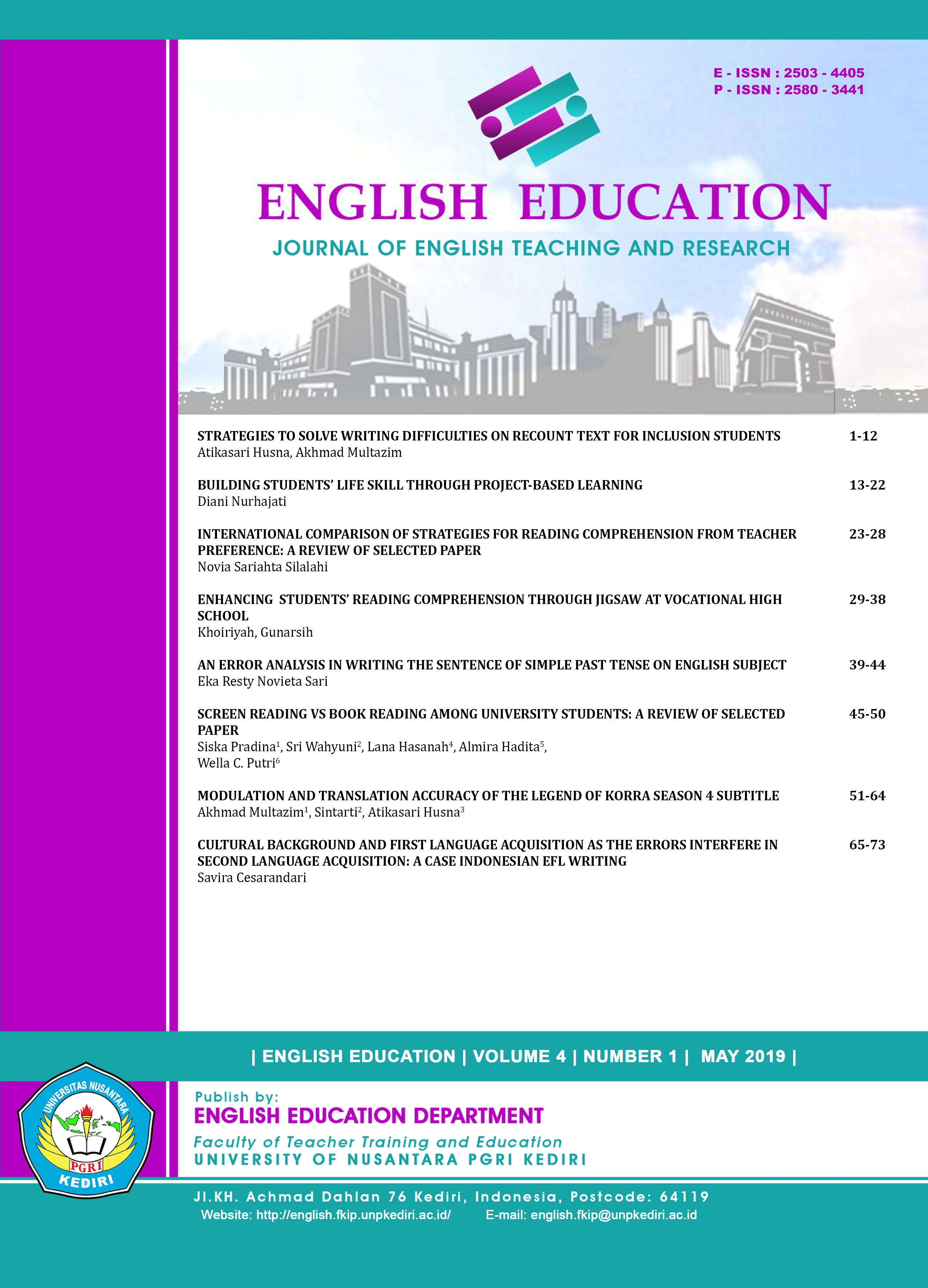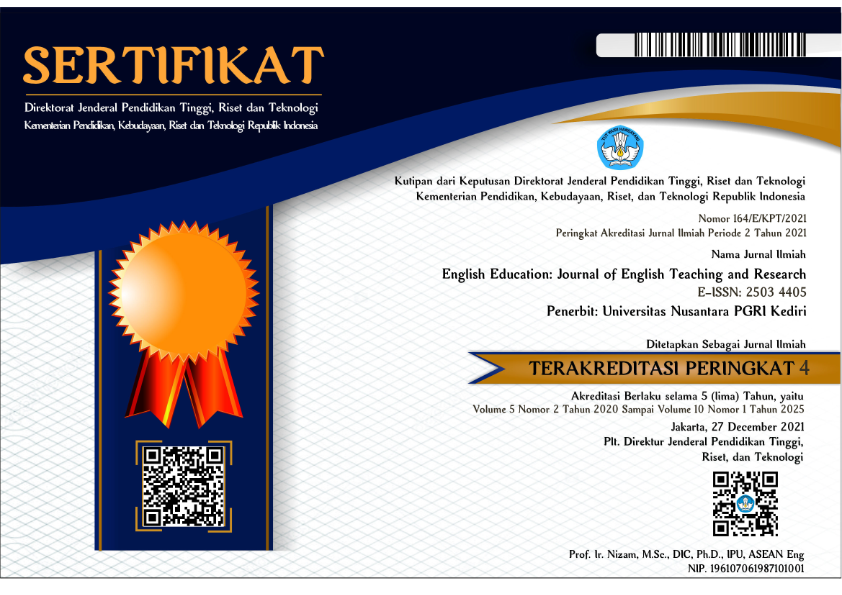A Screen Reading Vs Book Reading Among University Students: A Review of Selected Paper
DOI:
https://doi.org/10.29407/jetar.v4i1.12969Abstract
The study aims to review and explore the research conducted by Tim Vandenhoek entitled “Screen Reading Habits among University Students” that was published in 2013. This review will use descriptive qualitative methods, to try to understand how students behave in reading books, whether screen reading or book reading from the author's perspective. The findings in this study that Tim Vandenhoek used a research design serve online with a population of 630 University of Limerick, Ireland students. Online surveys are conducted by sending a number of questions about reading habits to students sent to e-mail. The survey consisted of 10 questions 2 questions related to the age and background of the linguistic respondents and 8 questions related to the habit of reading the screen and paper. The findings found by researchers are that students tend to read books rather than reading screens, the reason being that many students do not know how to use digital annotations on computers, this is evidenced by as many as 87% of students highlight and underline a point when reading a book, and 29% students highlight and underline points when reading the screen. With the growth of tablet computers and e-readers increasing rapidly, the limitations of students in reading the screen will hinder students from following technological progress. Therefore the role of educators in providing training in computer use and how to use digital annotations is very important, it can aim to facilitate students in reading the screen to keep up with technological progress.
Downloads
Downloads
Published
Issue
Section
License
Authors who publish with this journal agree to the following terms:
- Copyright on any article is retained by the author(s).
- The author grants the journal, the right of first publication with the work simultaneously licensed under a Creative Commons Attribution License that allows others to share the work with an acknowledgment of the work’s authorship and initial publication in this journal.
- Authors are able to enter into separate, additional contractual arrangements for the non-exclusive distribution of the journal’s published version of the work (e.g., post it to an institutional repository or publish it in a book), with an acknowledgment of its initial publication in this journal.
- Authors are permitted and encouraged to post their work online (e.g., in institutional repositories or on their website) prior to and during the submission process, as it can lead to productive exchanges, as well as earlier and greater citation of published work.
- The article and any associated published material is distributed under the Creative Commons Attribution-ShareAlike 4.0 International License








 Article template
Article template



